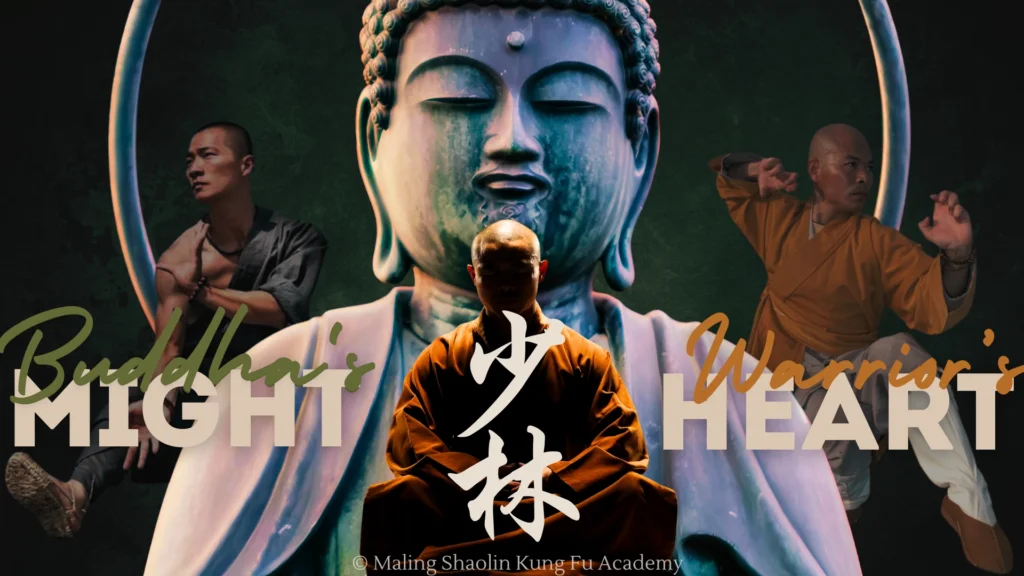
Shaolin Kung Fu, often regarded as the pinnacle of Chinese martial arts, is a system that combines physical prowess, philosophical depth, and a rich cultural heritage that extends beyond mere self-defense. It is renowned not only for its rigorous training and iconic forms but also for its spiritual foundations and philosophical underpinnings. Although much attention has been placed on the legendary Shaolin Temple, the heart of Shaolin Kung Fu lies in the art itself—its techniques, training methods, and the way it has evolved over centuries.
Origins and Development
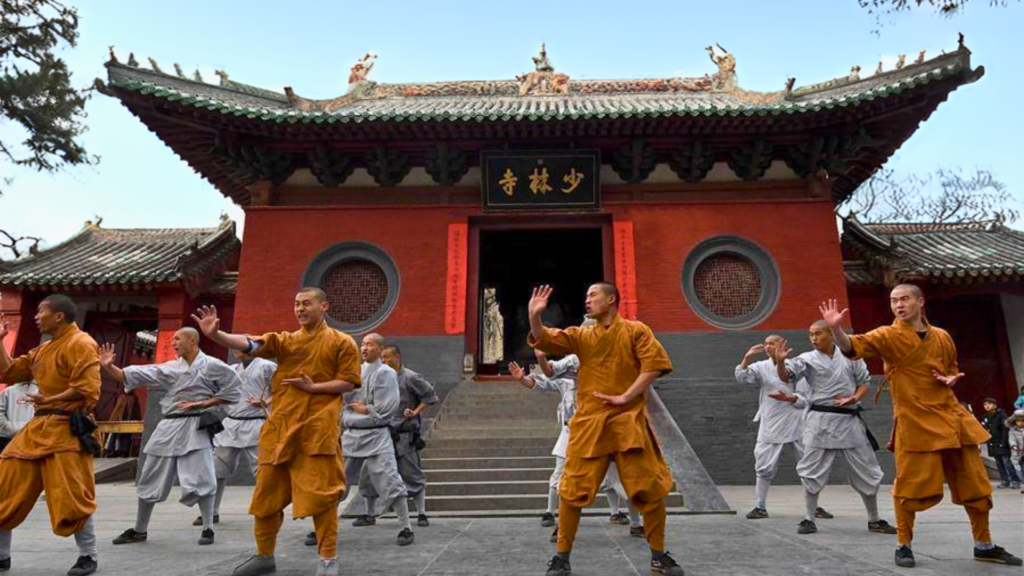
While the Shaolin Temple was established in 495 CE during the Northern Wei Dynasty, Shaolin Kung Fu’s martial system evolved over time, significantly shaped by Buddhist philosophy, particularly the teachings of Chan (Zen) Buddhism. According to legend, Bodhidharma, an Indian monk, arrived at the temple around 527 CE and taught meditation practices to the monks. To help them endure the rigors of long meditation, he introduced exercises, which are believed to be the roots of Shaolin martial arts. Though the veracity of this legend is debated, it symbolizes the intertwining of martial training with spiritual cultivation in Shaolin’s philosophy.
As the temple faced numerous external threats—warlords, bandits, and political instability—the monks honed their combat skills, integrating various fighting techniques into their training. Over the centuries, Shaolin Kung Fu developed into a sophisticated system encompassing not only hand-to-hand combat but also weapons training, physical conditioning, and philosophical teachings aimed at self-mastery.
Shaolin Training: A Path of Discipline
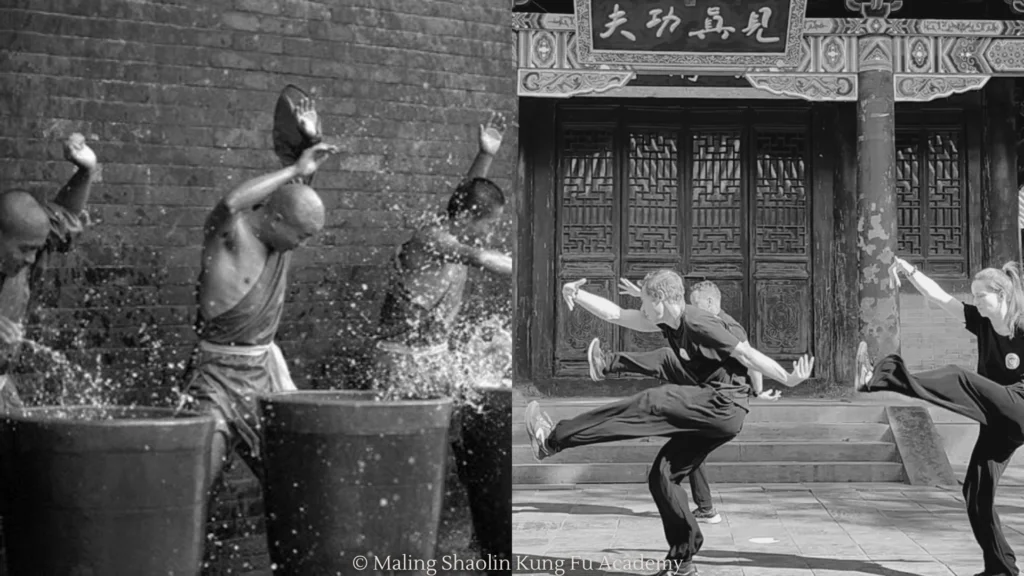
Training in Shaolin Kung Fu is rigorous and structured, demanding both physical endurance and mental fortitude. At its core, Shaolin training consists of three primary elements: forms (套路, tàolù), application (散手, sǎnshǒu), and internal cultivation (内功, nèigōng). These three aspects work in harmony to develop a martial artist who is not only capable in combat but also balanced in mind and spirit.
- Forms (Tàolù): Forms are pre-arranged sequences of movements that include strikes, blocks, kicks, stances, and jumps. These movements are designed to condition the body, improve flexibility, coordination, and strength while also teaching the fundamental techniques of the system. Forms like the Xiao Hong Quan (Little Red Fist) and Da Hong Quan (Big Red Fist) are among the most iconic in Shaolin Kung Fu. Each form is designed to internalize proper technique and flow, preparing practitioners for real-world applications.
- Application (Sǎnshǒu): While forms are essential, they are not enough on their own. Application involves taking the techniques learned from forms and applying them in combat situations. Sparring, partner drills, and scenario-based training help practitioners understand the effectiveness of techniques in dynamic environments. Shaolin Kung Fu emphasizes both striking and grappling, with equal focus on offense and defense.
- Internal Cultivation (Nèigōng): Shaolin Kung Fu also places a strong emphasis on internal energy work, or “neigong” (内功). This involves breathing exercises, meditative practices, and movements designed to strengthen internal energy (qi, 气) and maintain overall health. Internal cultivation is seen as vital for long-term practice, allowing practitioners to harness both physical and mental strength. Famous Shaolin practices like Yi Jin Jing (Muscle-Tendon Changing Classic) and Xing Yi Ba (12 Animal Qigong) illustrate this aspect.
In addition, perparation of the body for the forms, applications, and general mobility and wellbeing are needed:
- Conditioning (Shēntǐ xùnliàn): Shaolin conditioning involves hardening the body to withstand attacks while increasing endurance and stamina. Training regimens include:
- Iron Palm (Tiě shā zhǎng): Strengthening the hands for powerful strikes by conditioning them through repetitive strikes on hard surfaces.
- Iron Body (Tiě bù shān): Strengthening the body to withstand strikes without sustaining injury, often using techniques such as striking hard objects or specialized breathing exercises.
- Flexibility and Agility: Practitioners often spend hours each day on stretching and flexibility exercises, which are vital for high kicks, low stances, and fluid transitions between movements. The ability to move swiftly while maintaining balance is essential in Shaolin Kung Fu.
Weapons in Shaolin Kung Fu
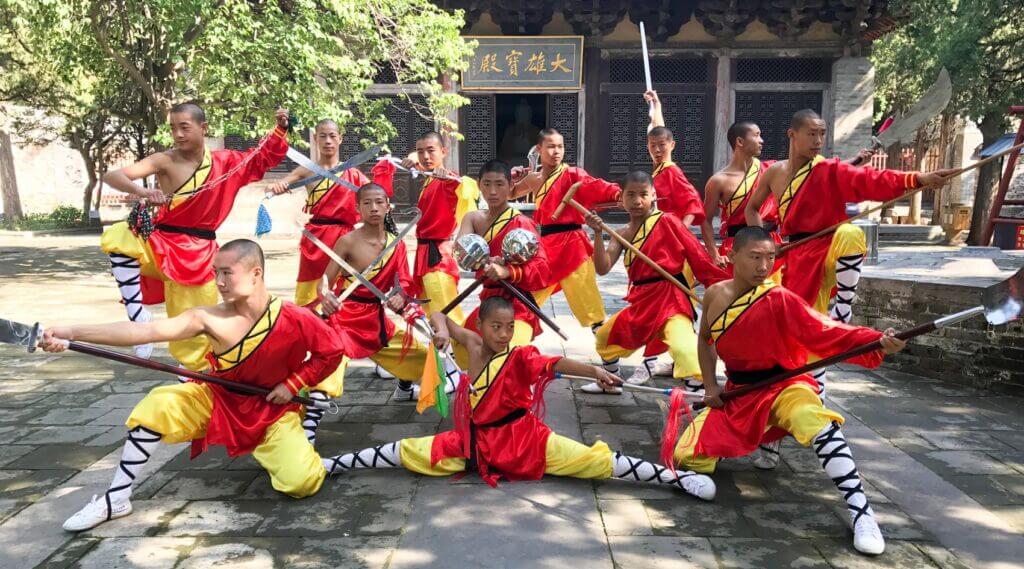
Weapons training is an integral part of Shaolin Kung Fu, with practitioners learning to use a variety of traditional Chinese weapons, including the staff (棍, gùn), sword (剑, jiàn), spear (枪, qiāng), and sabre (刀, dāo). Each weapon has its own forms, techniques, and applications. The Shaolin staff, in particular, is legendary, as it is said to have been one of the earliest weapons used by the monks for self-defense. The versatility of the staff, along with its emphasis on coordination, speed, and power, made it the “mother of all weapons” in Shaolin Kung Fu.
The Philosophy Behind the Martial Art
One of the most distinctive aspects of Shaolin Kung Fu is its connection to Buddhist principles. While the physical techniques are powerful and effective, the ultimate goal of Shaolin martial arts is self-cultivation. Practitioners are expected to embody virtues like humility, patience, compassion, and discipline. These virtues are encapsulated in the concept of Wude (武德), or martial morality, which teaches that martial arts should not be used for aggression but for self-defense, protection of the weak, and spiritual growth.
The spiritual aspect of Shaolin Kung Fu is often seen in its meditative practices and the emphasis on balancing the mind and body. Chan Buddhism, which focuses on mindfulness, meditation, and enlightenment through direct experience, plays a crucial role in shaping the moral and philosophical framework of Shaolin Kung Fu. Training the mind to be calm and focused is considered just as important as training the body.
The Evolution and Adaptation of Shaolin Kung Fu
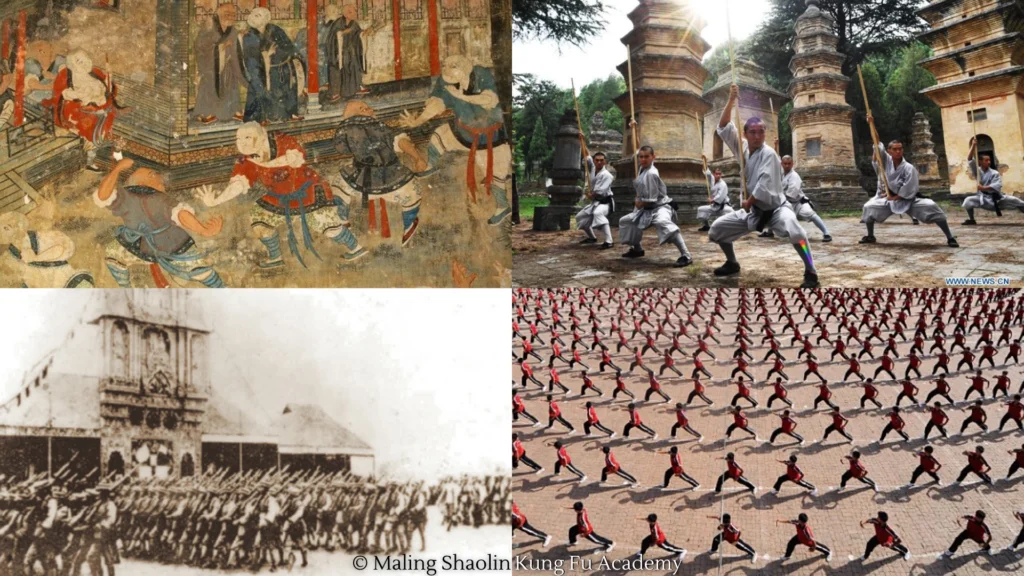
Throughout history, Shaolin Kung Fu has undergone numerous transformations. One significant moment came with the destruction of the Shaolin Temple in 1928, during which much of the temple’s documentation, including manuals on martial arts, was lost in a fire. Despite this, Shaolin Kung Fu survived, passed down through oral traditions and the teachings of monks who survived the battle. Much of this documentation has since been restored through the tireless efforts of monks and masters over the last century, including our predecessor Grandmaster Shi De Qian.
In the 20th century, with the rise of the new government and the push towards modernization, traditional martial arts faced challenges. However, Shaolin Kung Fu adapted to these changes, blending elements of modern wushu with its traditional practices. Wushu, a performance-oriented form of martial arts, helped popularize kung fu worldwide. While some purists criticized this evolution, many masters argue that wushu training enhances traditional kung fu by improving flexibility, strength, and fluidity of movement.
In the minds of masters, Shaolin Kung Fu, much like the principles of Buddhism, focuses on self-cultivation. It aims to strengthen one’s body and mind, not to prove oneself superior or to belittle or even compare other arts or styles (in fact, the warrior monks’ precepts prohibit this mindset). It is one’s journey through mental fortitude and physical feats. This is why some practitioners spend their entire lives focused on one style, weapon, or even just one form, continually challenging themselves to grow and attain a higher version of themselves. Thus, real kung fu is the feeling, effort, and journey. Whether you embrace traditional methods or embrace modern ones, growth is still growth.
Through its centuries of use and development, Shaolin Kung Fu has gone through continual evolution, changing forms as war, peace, and societies shift, a pattern it continues today, with schools across the globe teaching its principles. It has transcended its origins as a monastic practice to become a global phenomenon, attracting practitioners from all walks of life. While modernization and commercialization have inevitably influenced its practice, Shaolin Kung Fu’s core values and teachings continue to thrive.
Shaolin Kung Fu in the Modern World
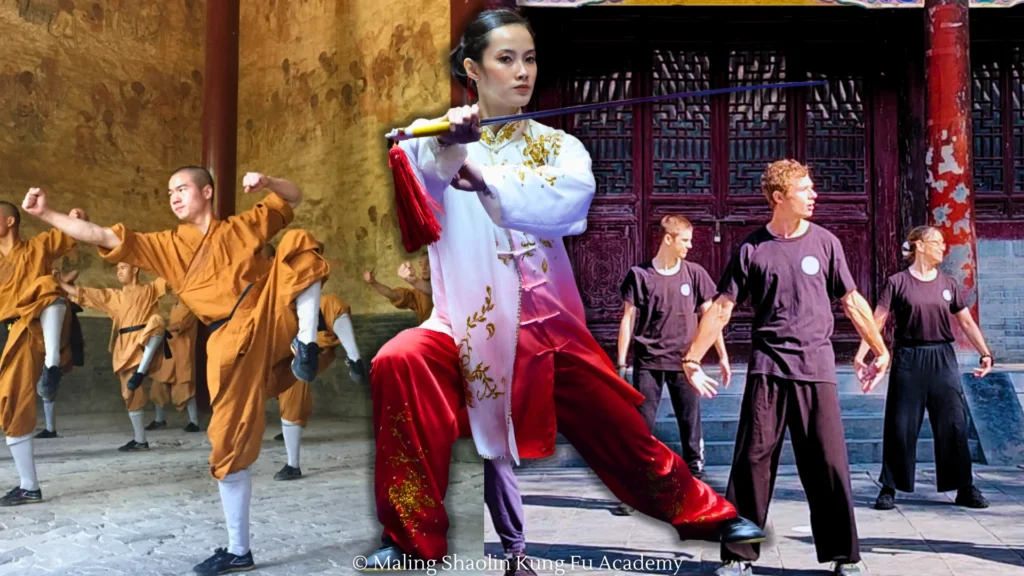
In modern times, Shaolin Kung Fu is practiced by thousands worldwide, both in its traditional form and in its modernized, performance-oriented variants. Some schools focus on the combat applications of Shaolin Kung Fu, preserving the traditional fighting techniques, while others emphasize the health benefits, meditative aspects, and philosophical teachings of the system.
Moreover, Shaolin Kung Fu has gained widespread recognition through media, films, and cultural exchanges, spreading its influence far beyond China. Movies featuring Shaolin monks, such as “Shaolin Temple” starring Jet Li, helped popularize the art globally, inspiring generations of martial artists.
While debates about the authenticity and “realness” of modern Shaolin Kung Fu continue, it is clear that the art is far from dying out. Whether it is practiced for self-defense, physical fitness, or spiritual growth, Shaolin Kung Fu retains its timeless appeal, offering practitioners a path to balance, harmony, and self-mastery.
Conclusion
Shaolin Kung Fu, with its rich history and deep philosophical foundations, stands as one of the most comprehensive martial arts systems in the world. It is not merely about learning to fight; it is about cultivating discipline, resilience, and wisdom. Whether training at the historic Shaolin Temple or in a school halfway around the world, practitioners of Shaolin Kung Fu are part of a lineage that spans centuries, carrying forward an art that is as much about the mind as it is about the body. Despite challenges and changes, Shaolin Kung Fu remains a living tradition, continuing to inspire and transform lives across the globe.
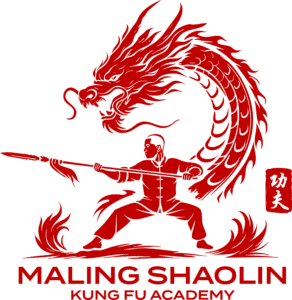





Me gustaria aprender kungfu
Hello Nigella, thank you for your interest in Maling Shaolin Kung Fu Academy! We will email you with more details. In the meantime, you can view our current promotion here: https://shaolin-kungfu.com/enrollment/new-year-offer/